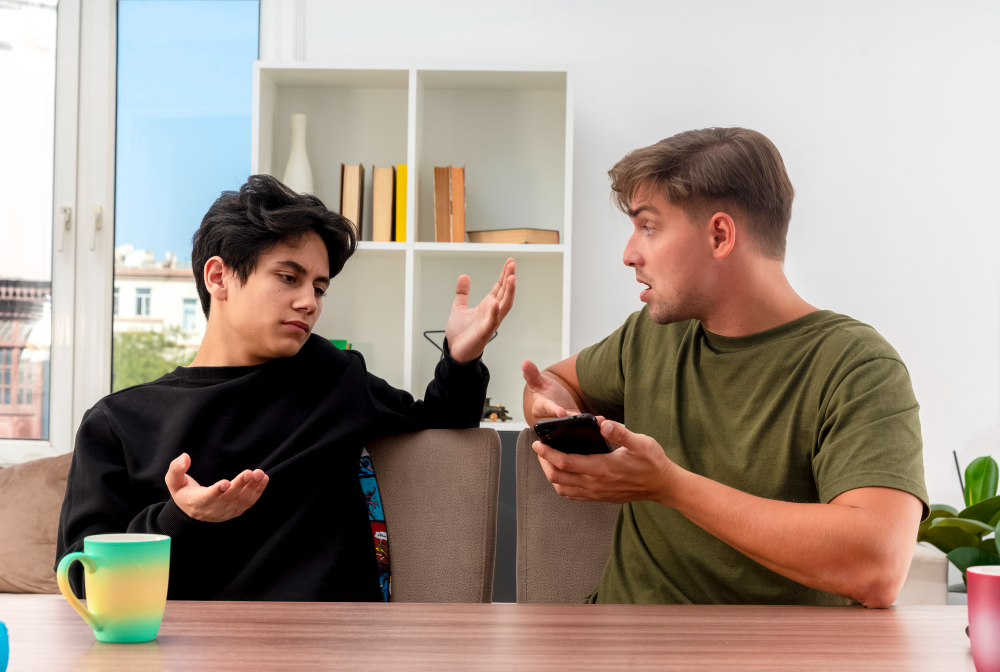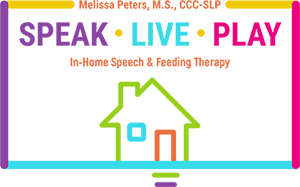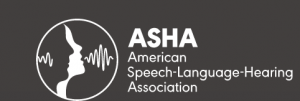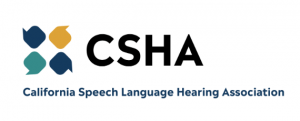To speak effectively, the message must go from the brain to the mouth. The message dictates what the muscles need to move to make a sound. In people suffering from apraxia of speech (AOS), these messages are not received correctly due to brain damage. The individual is not able to move their tongue and mouth correctly to say the sound. In severe cases, the individual is not able to speak at all. Speak Live Play focuses on helping these individuals overcome their challenges through vigorous training and exercises that help them communicate effectively.
Our speech-language therapists stay current in the evolving industry and use evidence-based treatment approaches to ensure that the patients achieve function and independence in the shortest time possible. We are committed to offering custom care plans that meet the patient’s needs uniquely and support their caregivers facing overwhelming communication challenges. Together, we will help the patient communicate effectively and enable them to live a happy, productive life.
What is Apraxia?
Apraxia is a neurological disorder characterized by the inability to make specific movements even though their muscles are normal. The individual has the capacity and desire to move to perform these actions, but they cannot execute them. Apraxia occurs in various forms. Orofacial is one of the forms that are characterized by the inability to move specific facial muscles. For example, the individual may be unable to wink or lick their lips.

Another form of apraxia affects the individual ability to move their arms and legs intentionally. On the other hand, people suffering from apraxia of speech may find it hard to move their tongue and mouth to speak. As mentioned, the person has the desire to speak; however, the tongue and mouth muscles are physically unable to form words.
An individual can have one or several forms of apraxia, depending on the damaged brain parts. A person with apraxia of speech might also experience oral apraxia. It is important to note that a person suffering from oral apraxia does not lose all facial movement. The individual can still sneeze and yawn since these movements involve automatic movement. However, the person may have a problem with voluntary movements such as smiling and chewing. Milder apraxia forms are known as dyspraxia.
Speech Changes observed in Individuals with Apraxia
Mild apraxia of speech might not significantly disrupt a person’s speech. However, severe cases can have devastating effects. These individuals are incredibly frustrated when they know what to say, but the mouth and tongue muscles cannot form the words. Here are the two main types of apraxia of speech (AOS).
Acquired AOS
This AOS form affects a person at any age, although it is common in adults. The disorder is caused by damage to the brain parts that control how we speak. The damages are head injury, stroke, tumor, and other illnesses that affect the brain. Most often, acquired AOS is accompanied by disorders that result from nervous system damage.
Childhood AOS
Childhood AOS is present from birth. Also referred to as developmental apraxia of speech or articulatory apraxia, this condition’s causes are not well understood. Scientific research involving imaging and other studies has not been able to find brain damage or difference in the brain structure in kids with AOS. However, recent scientific reading shows that children with AOS often have family members with a learning disability or communication disorder history. This observation indicates that the generic role in this type of disorder. Additionally, childhood AOS appears to be more rampant in boys than in girls are.
Here are some of the common speech problems observed in people suffering from apraxia of speech?
- Distorting sounds
People suffering from AOS have a problem pronouncing words correctly. The sounds, especially the vowels, are often distorted. Since the person may not place the tongue, jaw, and other speech structures in the right place, the sound often comes out distorted.
- Making inconsistent errors in speech
Sometimes, a person with AOS may say a difficult word correctly but face a problem repeating it. The person may also be able to say a particular sound one day but find it hard to say the same sound the following day.
- Groping for sounds
AOS sufferers often appear to be groping for the right word or sound. The person may try saying the word several times before saying it correctly.
Some of the other common speech-related symptoms associated with apraxia include;
- Making an error in stress, tone, or rhythm
- Omitting consonants at the beginning and end of words
- Difficult in pronouncing long or complex words
- Minimal babbling during infancy
- Use of nonverbal forms of communication excessively
What is Apraxia Speech Therapy/How Speech Therapy Can Help?
Speak Live Play speech-language pathologists provide therapy that focuses on practicing words, syllables, and phrases for people suffering from AOS. These professionals specialize in helping both kids and adults to improve their speech. The learning process takes a bit of time, and in severe AOS cases, the individual may need frequent speech therapy. The frequency of the speech therapy is reduced as the condition improves.
 Our highly trained SLPs use various types of cues in speech therapy to help people suffering from AOS pronounce the word correctly. It is important to note that no single therapy approach is shown to have the best results in treating apraxia of speech. However, Speak Live Play SLPs use general speech therapy principles to help individuals suffering from the disorder.
Our highly trained SLPs use various types of cues in speech therapy to help people suffering from AOS pronounce the word correctly. It is important to note that no single therapy approach is shown to have the best results in treating apraxia of speech. However, Speak Live Play SLPs use general speech therapy principles to help individuals suffering from the disorder.
Speech drills
The speech-language therapist focuses on speech drills, which involved asking the person to say words and phrases repeatedly during the therapy sessions.
Sound and movement exercises
The person is asked to listen to the therapist and watch his or her mouth as he/or she says a particular word or phrase. Watching the SLP’s mouth will help them replicate the same mouth movement to pronounce the words.
Speaking practice
The therapy sessions also involve practicing words, syllables, and phrases. The person suffering from AOS requires rigorous training and practice moving from one sound to another.
Vowel practice
Since most individuals with AOS have distorted vowel sounds, So Cal Speech-language pathologists often choose words that have vowels in various syllable types for practice. For instance, the person may be asked to say words such as house, out, down, mine, etc.
Paced learning
In severe AOS cases, the SPLs may use a small set of practice words to begin and increase the number of words for practice as the individual improves.
Goals for Apraxia Treatment
The primary goal of a speech-language pathologist specializing in Apraxia at Speak Live Play is to improve how individuals with AOS produce sounds and integrate sound into words. The treatment process focuses on getting the muscles that control speech to move correctly. The therapist at Speak Live Play will teach the patient how to move their muscles when saying various words and phrases. Regular training and repeated practice of sounds will be beneficial.
Additionally, the therapist will demonstrate techniques to help the patient slow down their speech or speak at a steady beat to improve their ability to say words. In severe cases, the therapist may also teach alternative communication methods, such as using hand gestures, pointing to letters, or writing.
Why Speak Live Play?
Patients suffering from apraxia often comprehend language better than they can speak. Our specialists start by performing a hearing evaluation to rule out hearing loss as a possible contributor. After this, our Speak Live Play therapists will evaluate and assess the patient’s speech development to determine the problem’s extent. We focus on intervention and therapy to help the patient plan, sequence, and coordinate speech production movement.
The speech therapist at Speak Live Play has rigorous training and broad expertise to provide customized service for each individual’s specific strengths and strengths. We offer a comprehensive evaluation, treatment, and speech practice. We also provide education to parents and caregivers of the AOS patient to help create an enabling environment to improve their speech. At Speak Live Play, we pride ourselves on offering expert care depending on our patients’ individual needs.
Sources
- https://www.asha.org/public/speech/disorders/apraxia-of-speech-in-adults/
- https://tactustherapy.com/what-is-apraxia/
- https://www.nidcd.nih.gov/health/apraxia-speech
- https://www.healthline.com/health/apraxia-of-speech#causes
- https://www.webmd.com/brain/apraxia-symptoms-causes-tests-treatments



